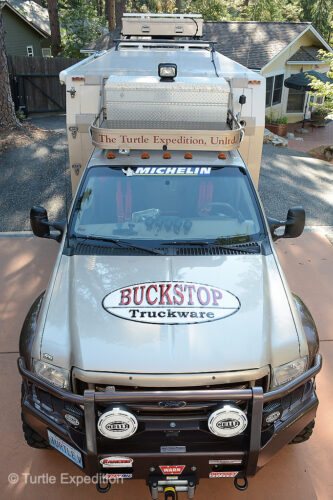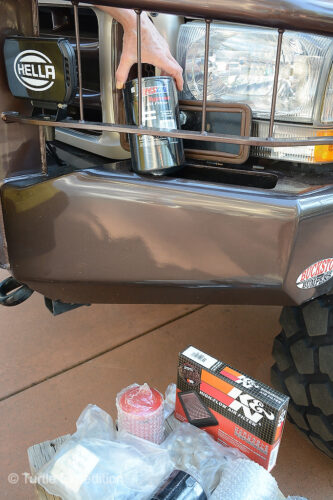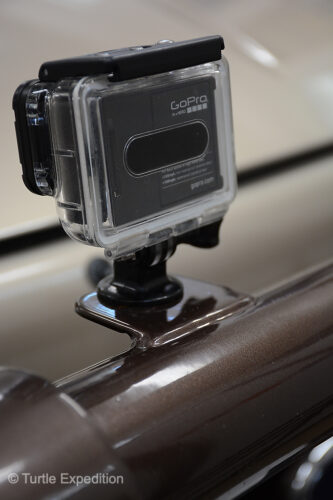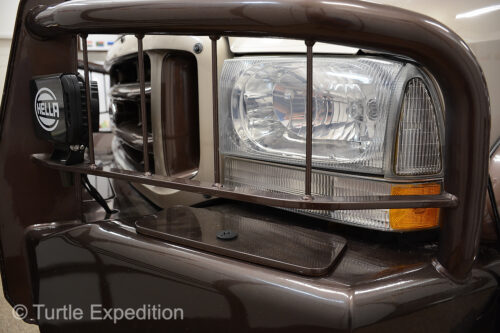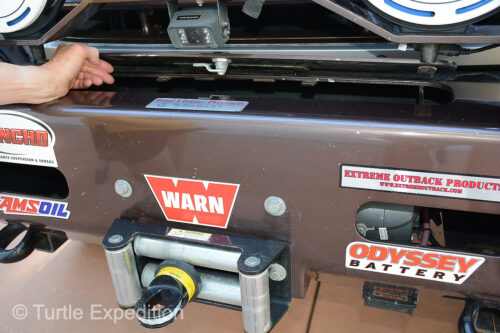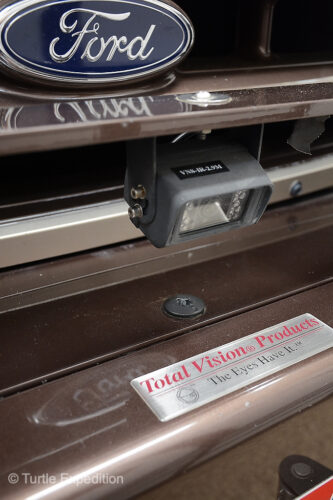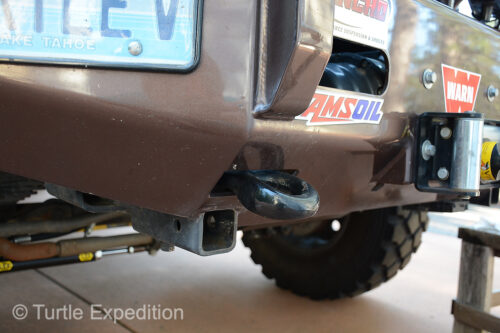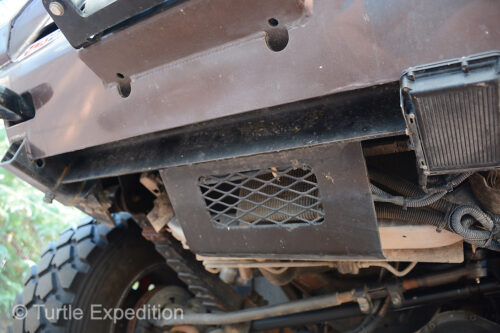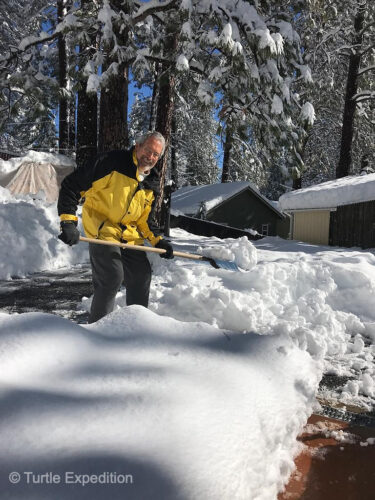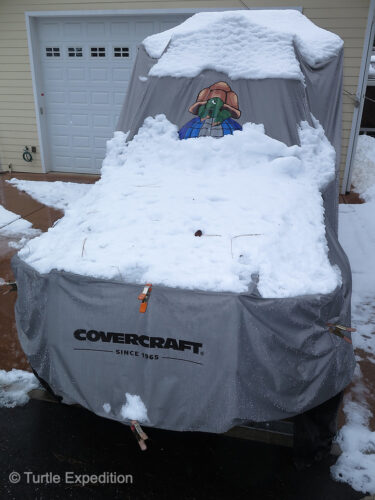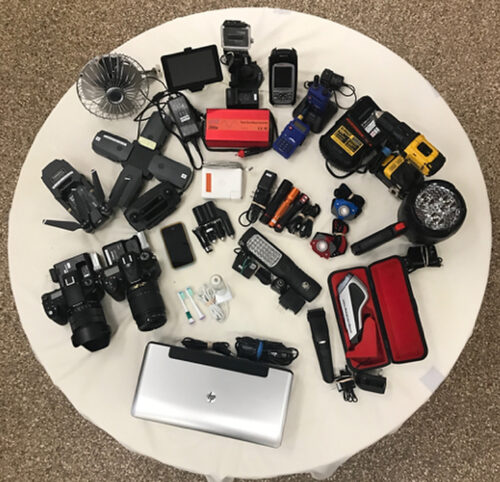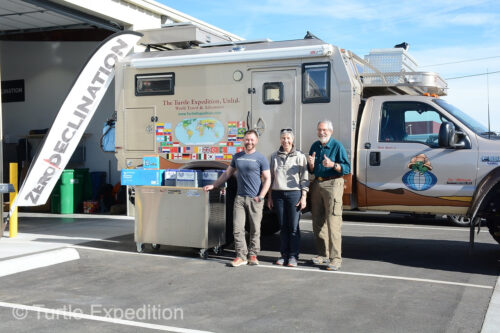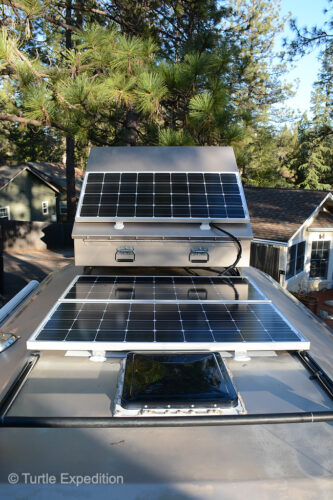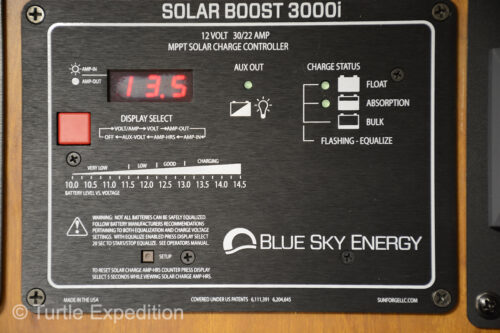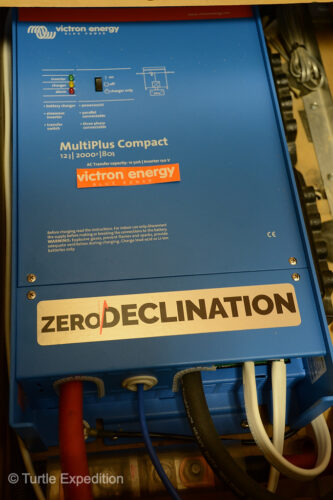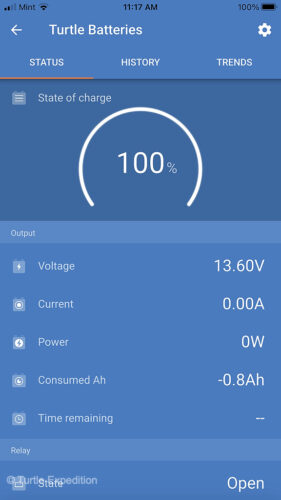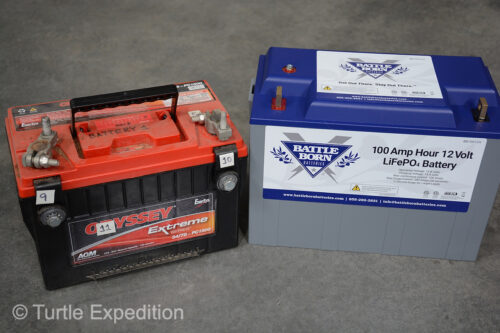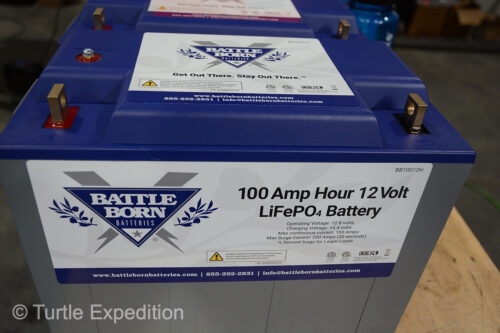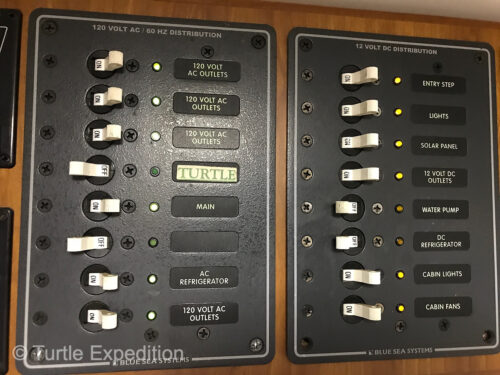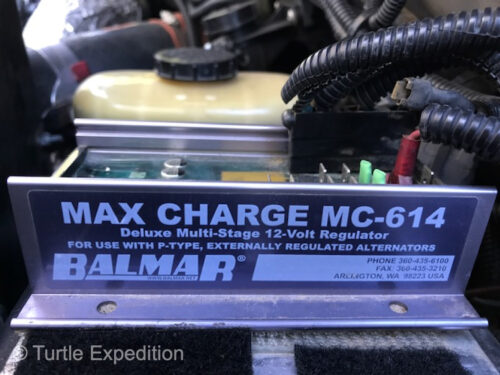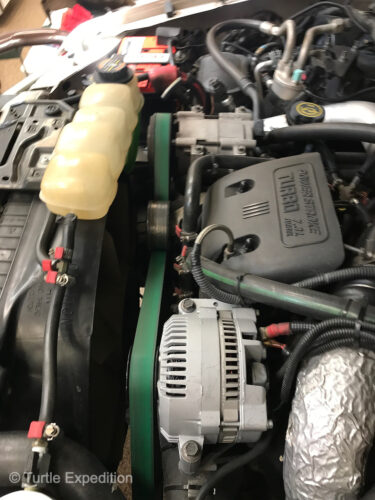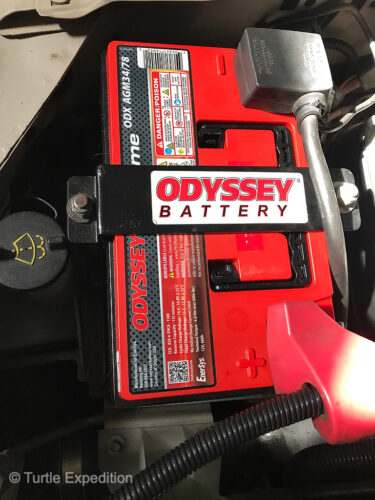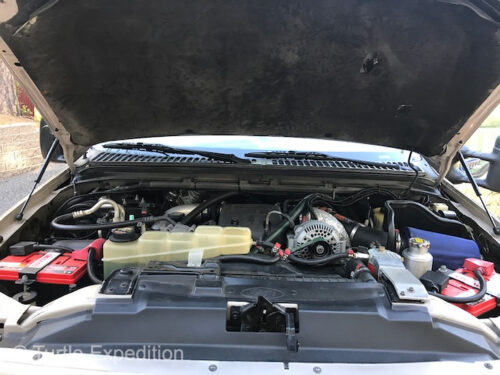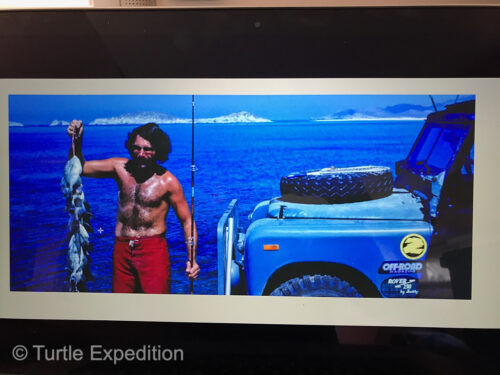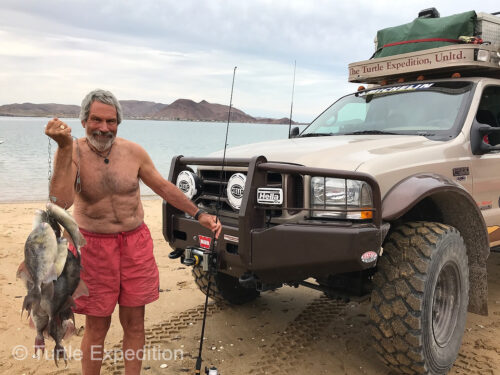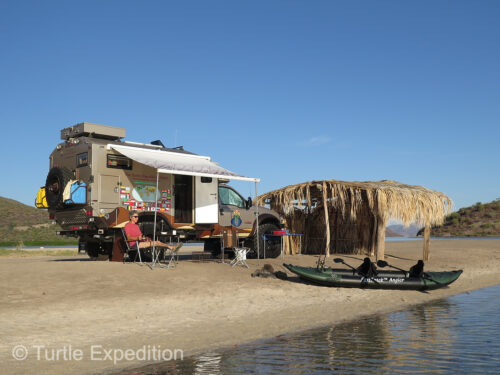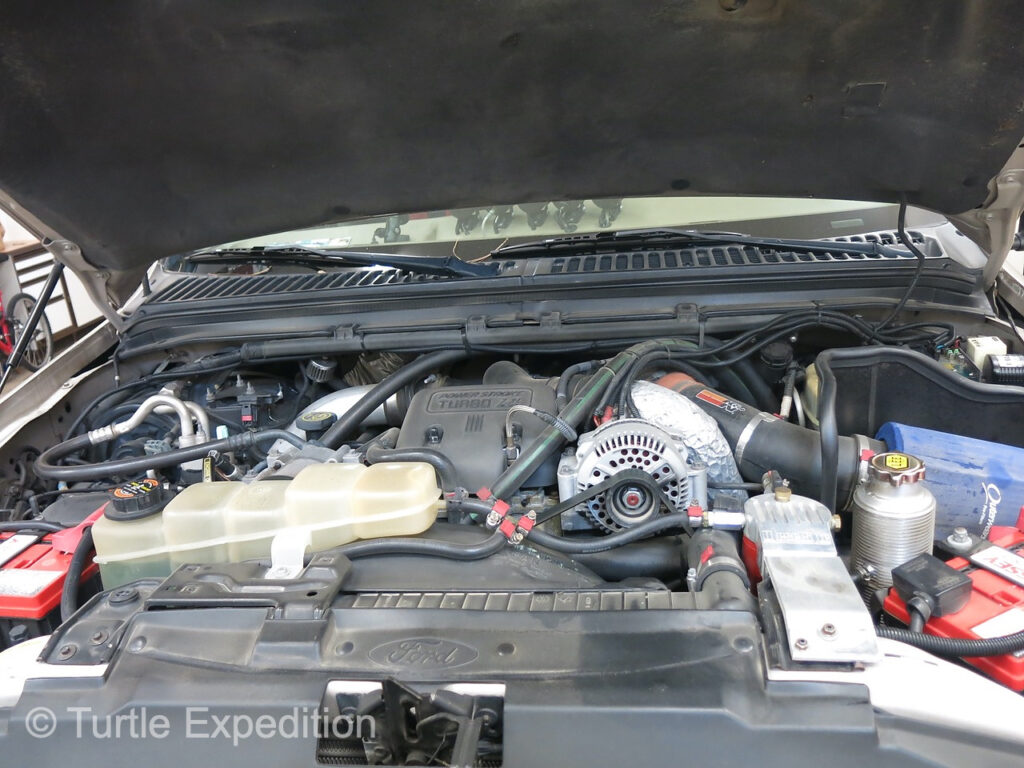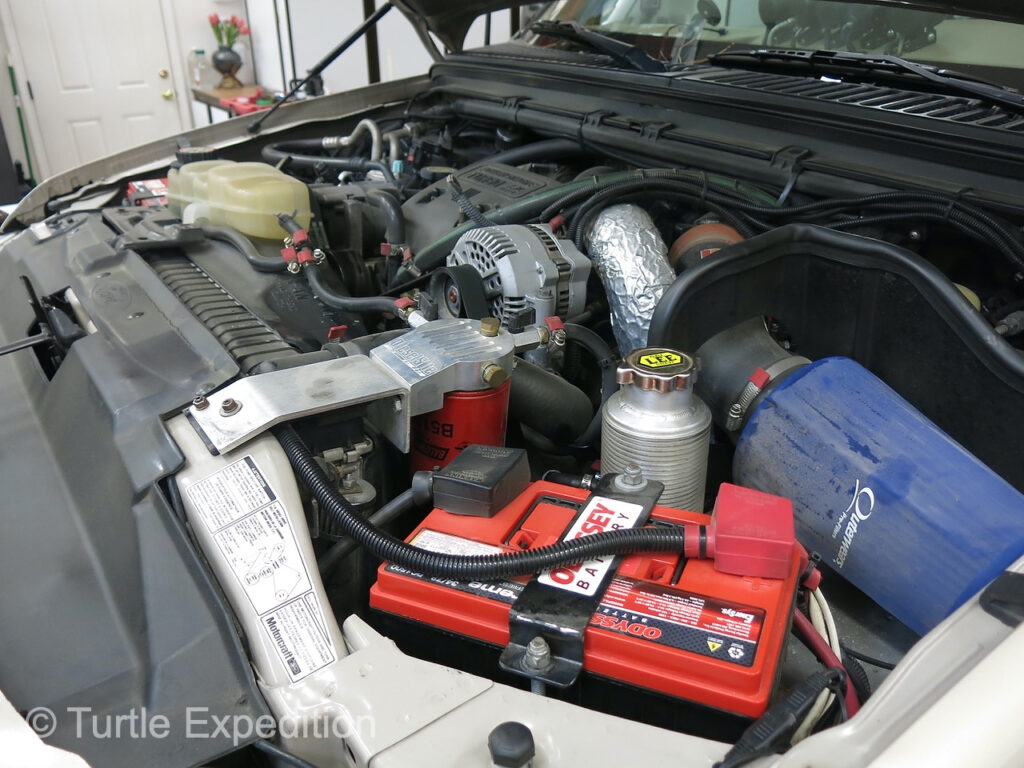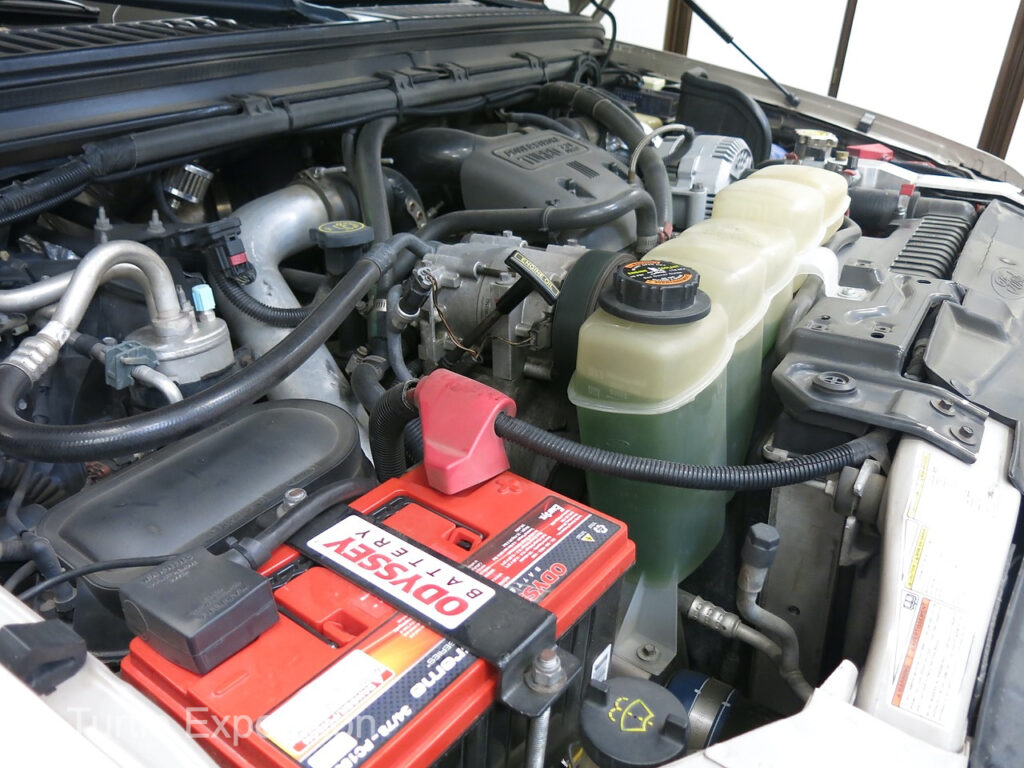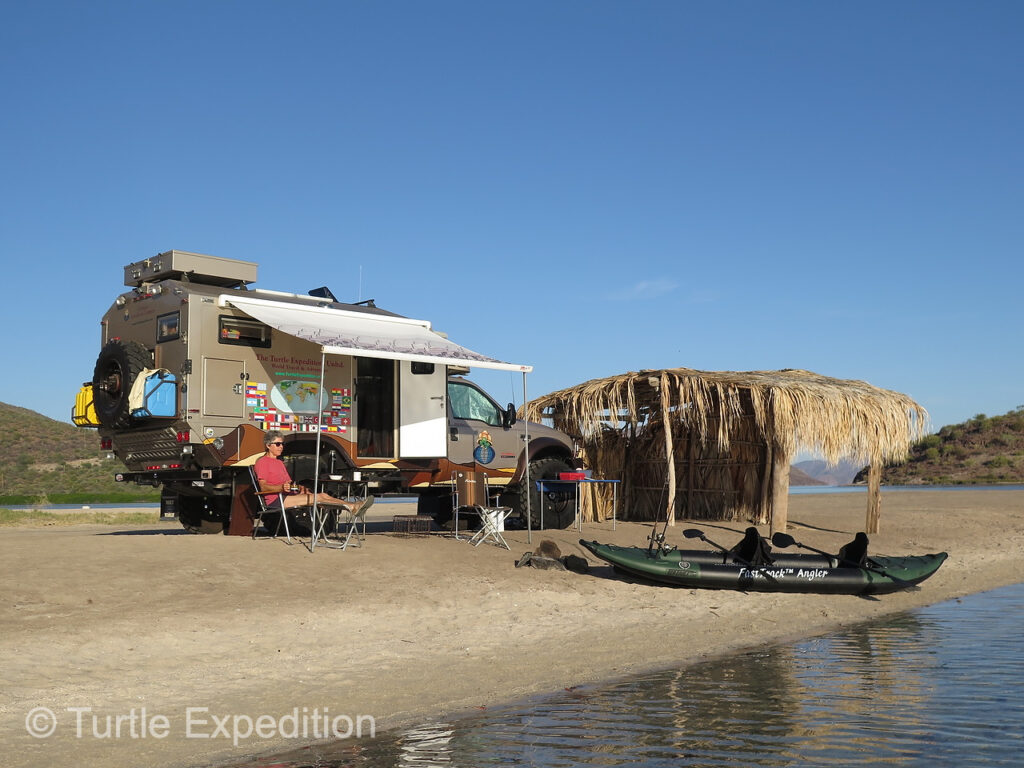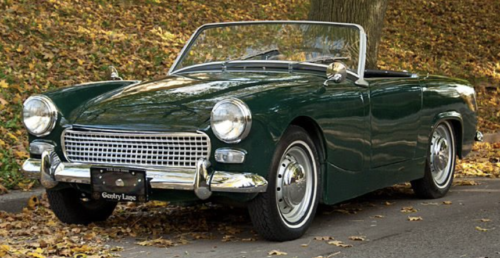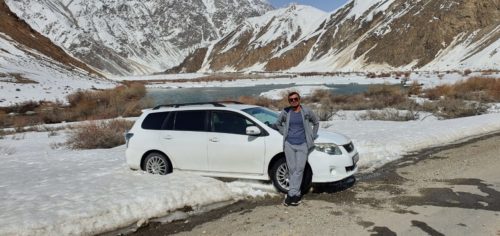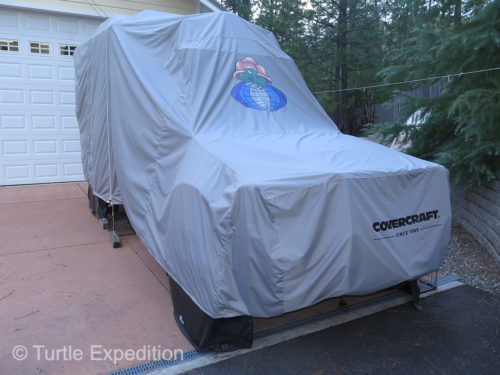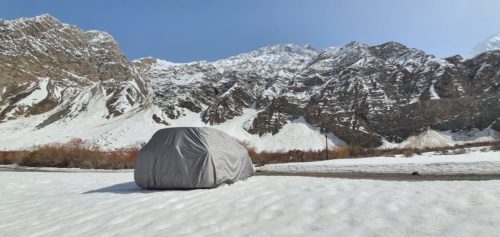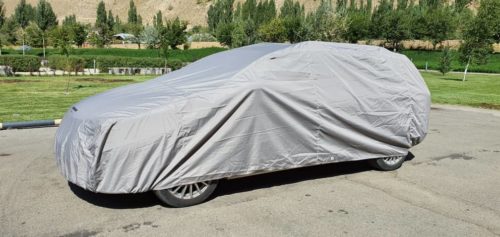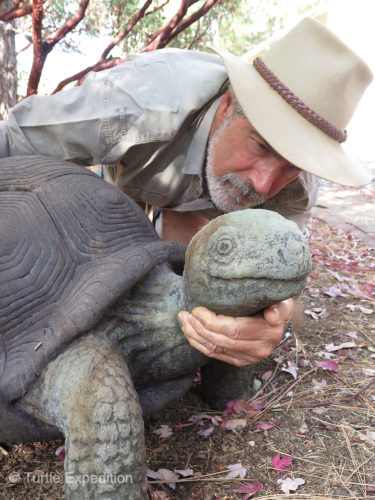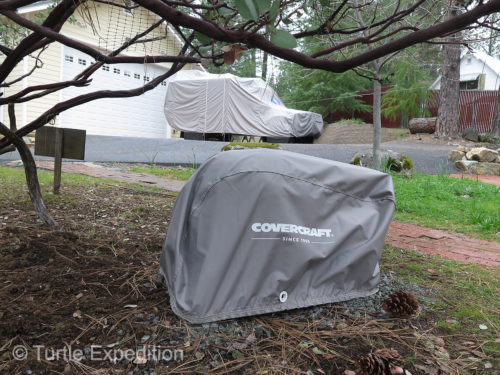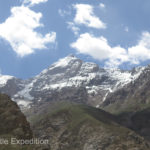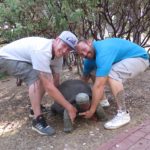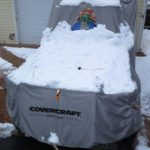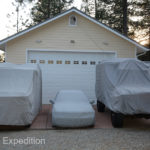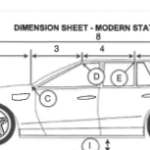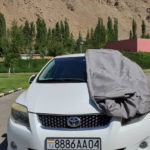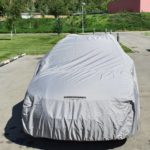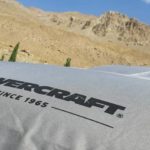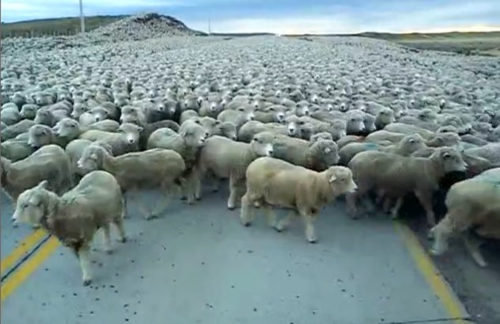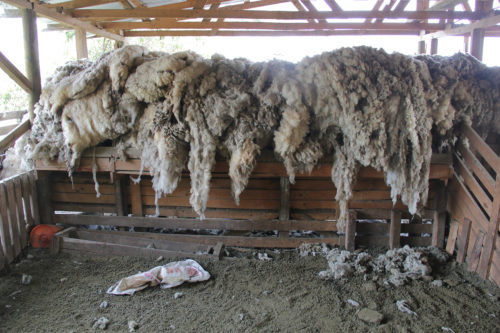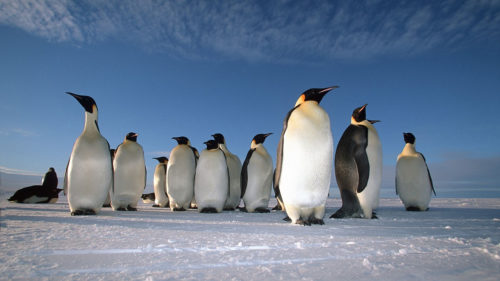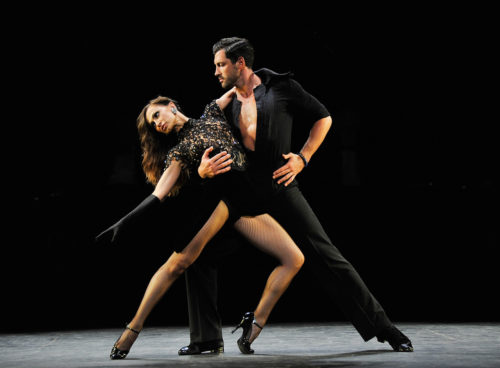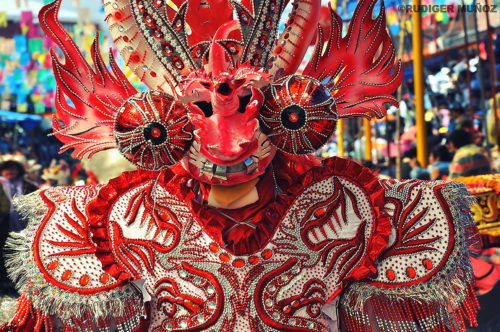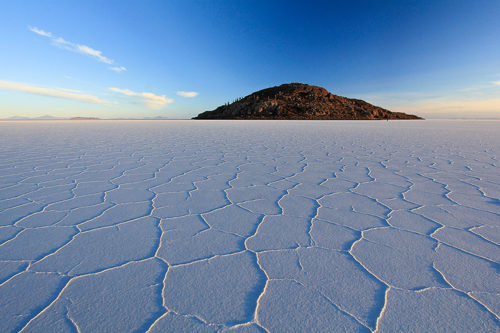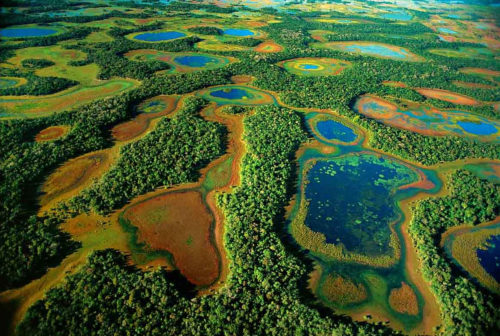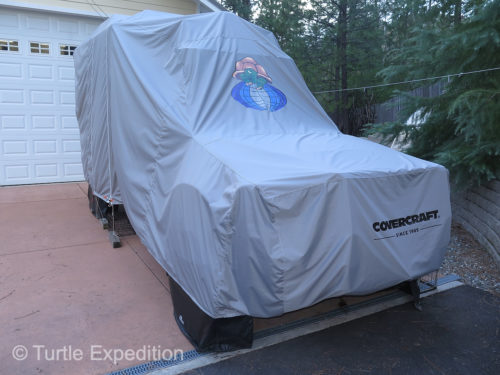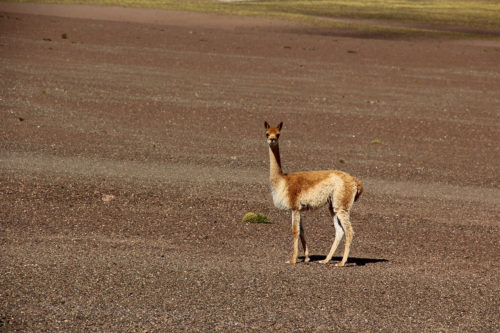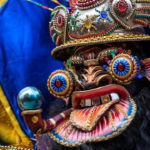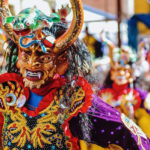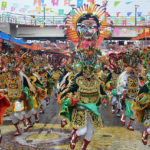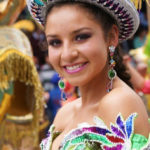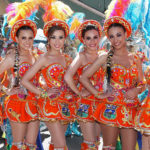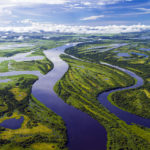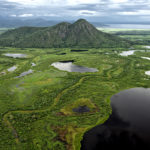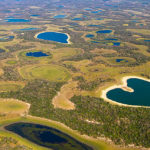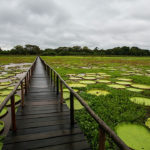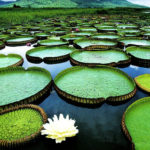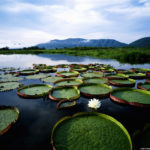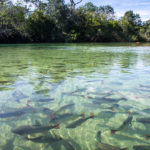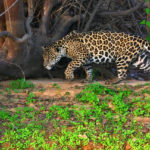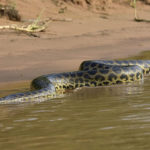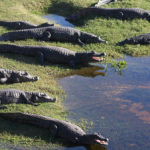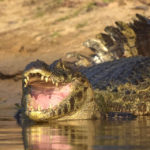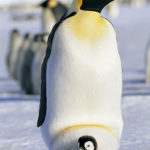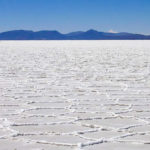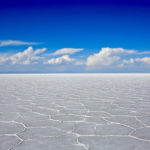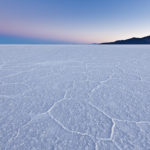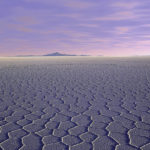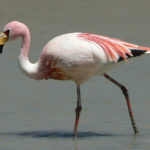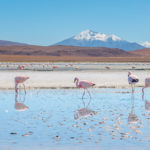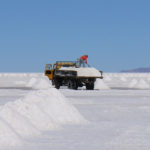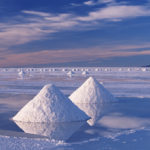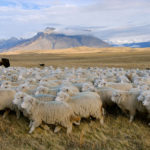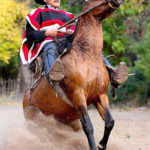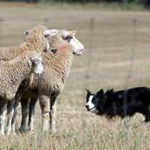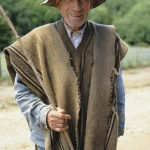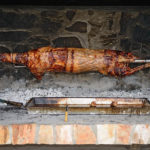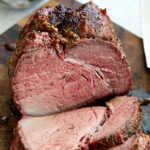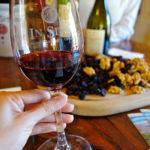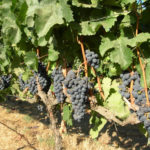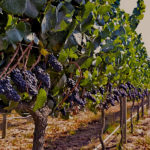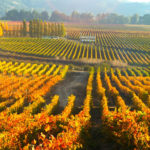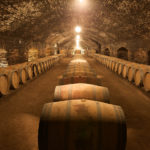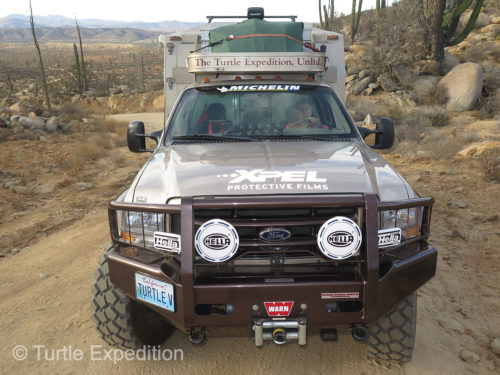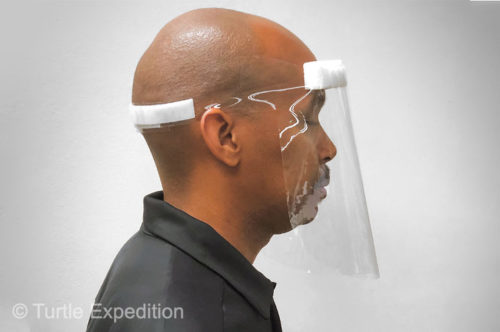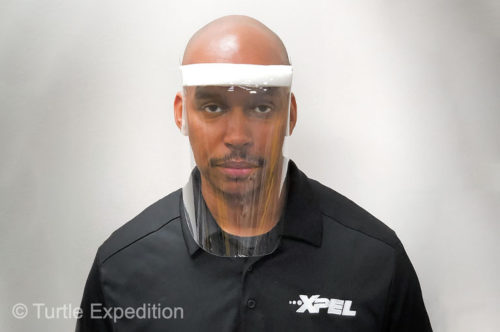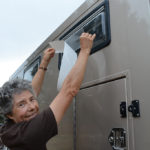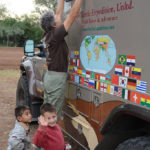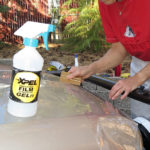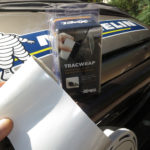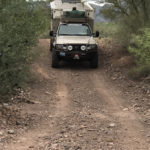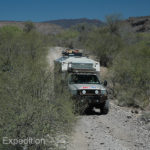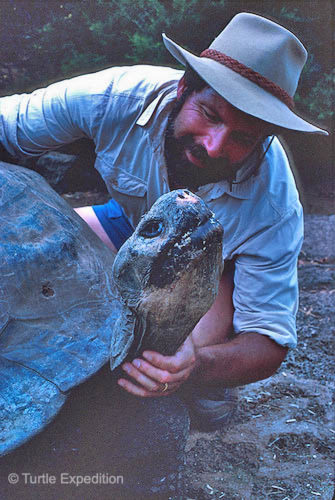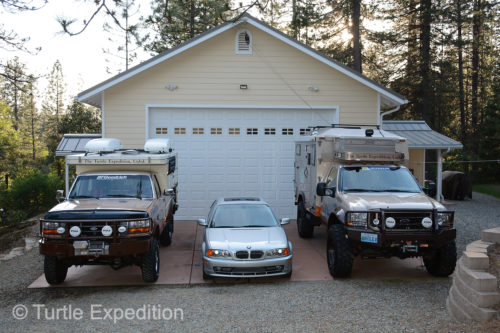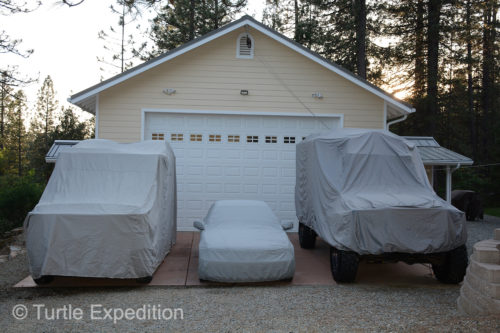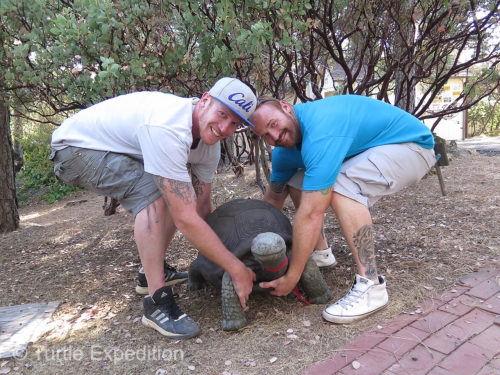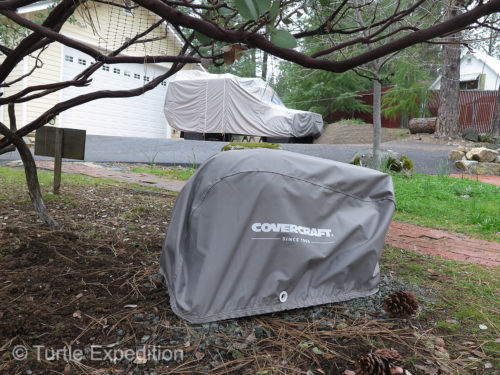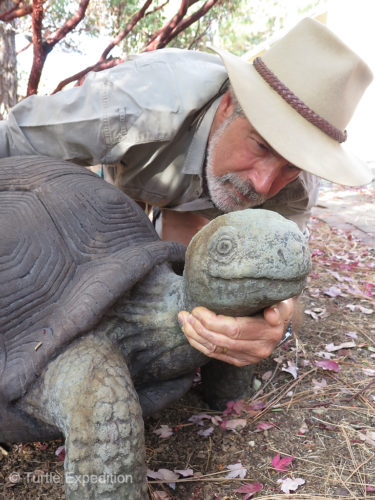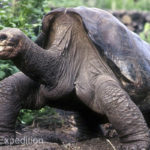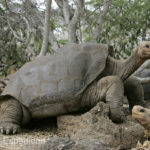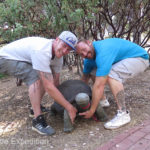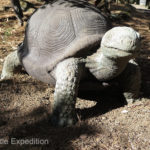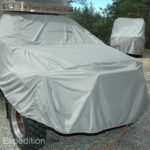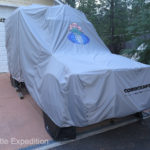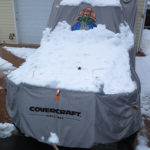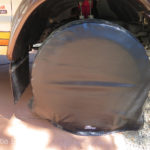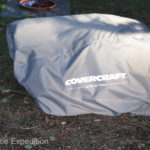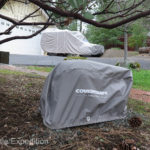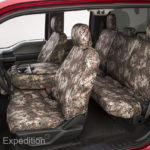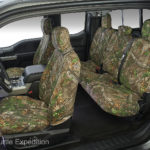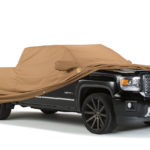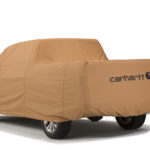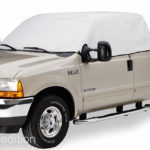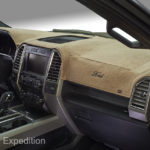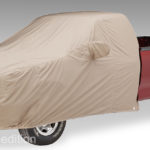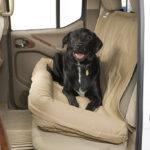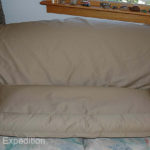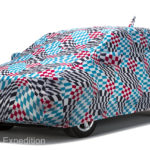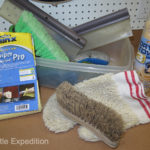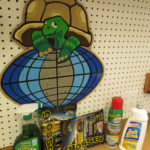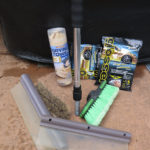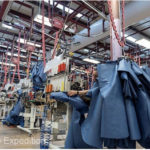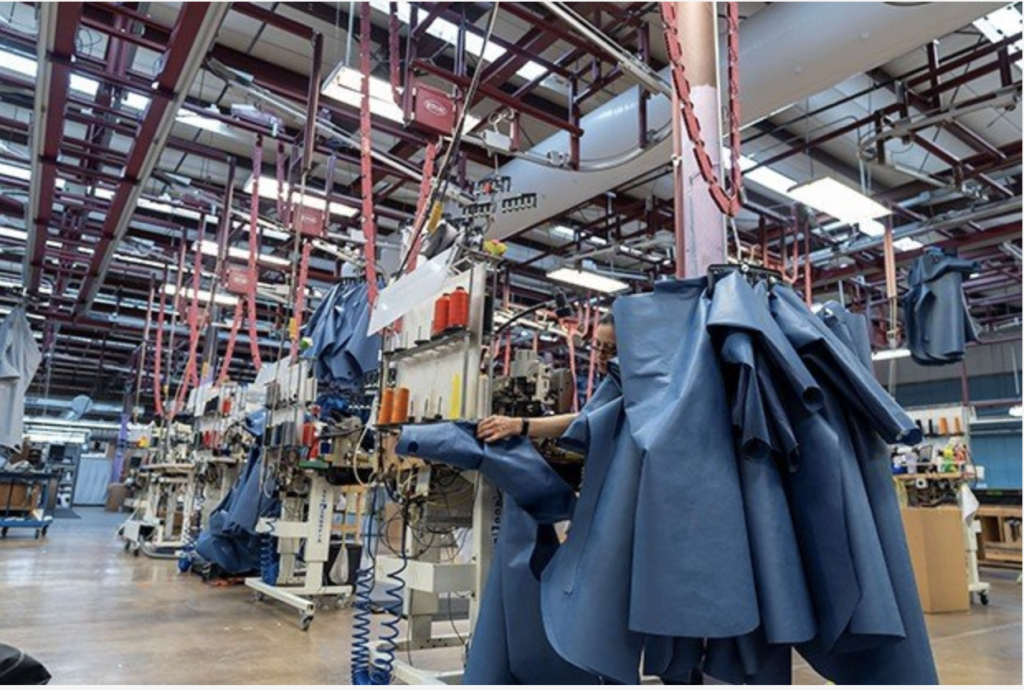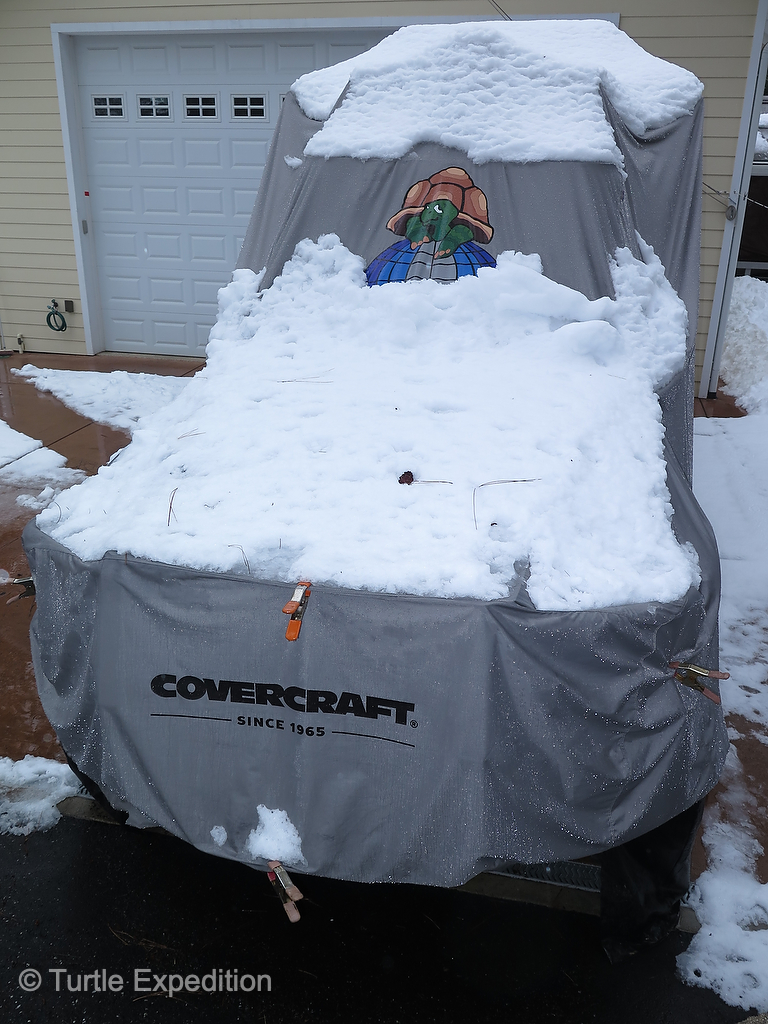Heading south from Cataviña and Rancho Santa Inez, our next stop was Mulegé to hopefully get internet. Many overland travelers have become infected with the dependency on internet and like any addiction, it’s hard to stop. As we continue our sponsorship for Masha, the young girl in Tajikistan, it’s fun to WhatsApp with her once a week or when we happen to have a good connection, allowing for the fact that she is 12 time zones away! In fact, thanks to readers like you, we are now able to help three other young children to get a better education through our Donor Box The Children of the Pamirs Education Fund.
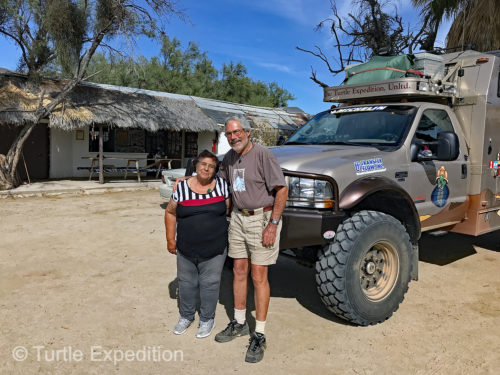
Before departing the historic Rancho Santa Inez, Señora Matilde requested to have her picture taken with Gary and The Turtle V.
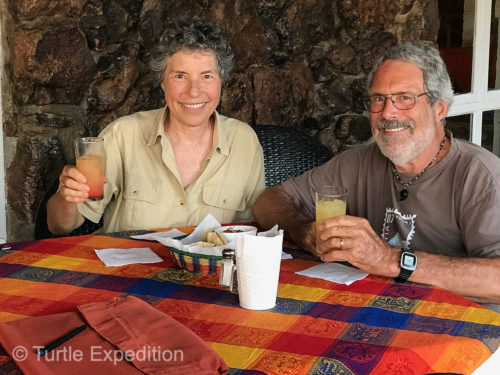
Hotel Serenidad in the quaint town of Mulegé was a must. It was here that Monika and I first met in 1977.
In a sense, we were continuing down “memory lane”.
Mulegé
A stop at the Hotel Serenidad outside the quaint town of Mulegé was a must. Mulegé is about 620 miles south of the border at San Diego, if you were wondering. It was here that Monika and I first met in 1977. The campground includes hot showers and even a laundromat. Unfortunately we did miss the weekly pig roast, which includes a salad, beans, tamales, flour tortillas, pork ribs, a dessert and one small margarita or one beer. All you can eat for only $15.00 bucks while a mariachi band entertains. What a deal!! Yes, they did have internet.
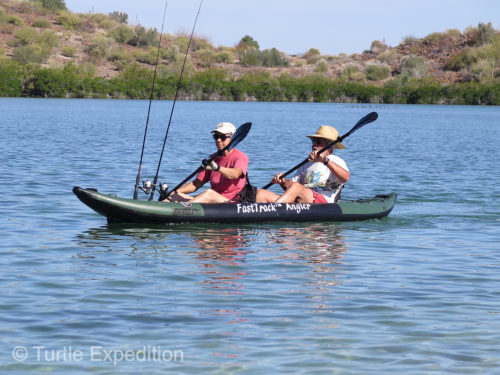
We had borrowed a Sea Eagle FastTrack Angler Pro inflatable kayak, (www.seaeagle.com), which would insure an endless supply of fresh fish.
Moving on down the beautiful coastline of the Sea of Cortez, we stopped at one of our favorite beaches to camp for a week or so. We had borrowed a
Sea Eagle FastTrack Angler Pro inflatable kayak, which would insure an endless supply of fresh fish. The problem was that every traveler who camped near us wanted to know more about The Turtle V and there were a hundred questions. Most could be answered by referring people to the 9-part blog we recently posted covering all the details of building our fifth expedition truck, The Turtle V. (
https://www.turtleexpedition.com/the-turtle-v-update-9-vehicle-specs-2019/). Remember there are nine parts!
Then and Now
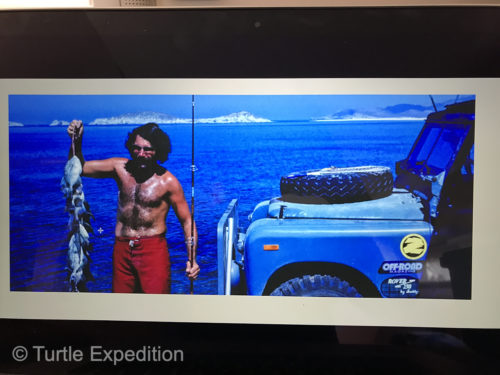
The memory of this photo taken in 1977 on the Sea of Cortez was one we wanted to revisit.
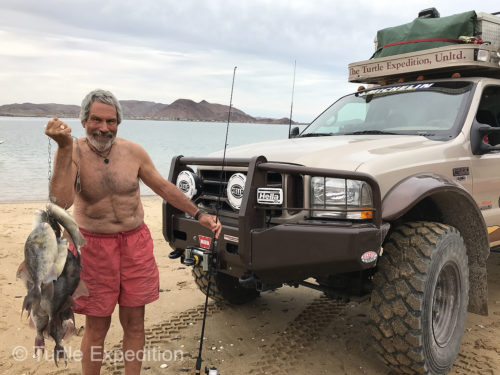
We could have fished off the rocks but having a boat made the catch easier.
In the morning, before the curious travelers started asking questions, we had time to catch dinner. It took us about 10 minutes to quickly inflate the Sea Eagle using their unique 2-stage double action Bravo 4 pump. Front & rear twin fishing rod holders and elastic tie-downs kept light gear out of our way. Waterproof bags clipped onto the back of the comfortable seats for camera and a water bottle. Paddling out to where we could see rocks in the clear water, the Sea Eagle was perfect to explore the shore line. With its removable skeg in combination with the external, rigid, inflatable “Needle Knife Keel “, it tracked straight and stable, even in light wind and small waves or chop. Using some flashy lures or pieces of scrap fish from the previous day, the trigger fish and small sea bass were happy to take the bait. The foam padded removable floor prevented punctures from fish splines. Back in camp, cleanup was easy thanks to the removable floor and big drain holes aft. Using the 2-stage double action pump, deflating was a 5-minute job.
Loreto
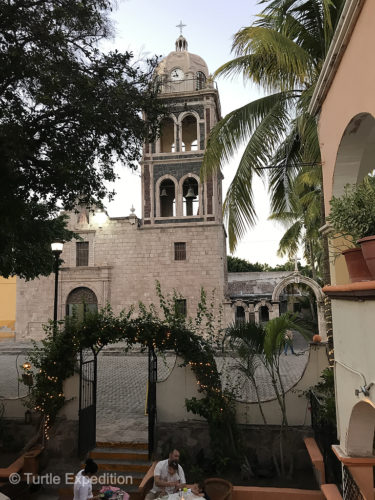
The old fishing village of Loreto, now a modern tourist resort, has not lost its charm.
Heading further south in search of a new adventure and good internet we reached the old fishing village of Loreto, now a modern tourist destination with an international airport and a port for cruise ships. Juan María de Salvatierra was a Catholic missionary to the Americas. On October 15
th, 1697, with one small boat and a crew and six soldiers, he landed at a place called Conchó (probably meaning waterhole), where he laid the foundation of Mission Nuestra Señora de Loreto, the first of the Baja California missions, a chain that would eventually reach all the way to San Diego, Los Angeles, San Francisco and end in Sonoma, California. Following the long-term religious policies of Spain in what they called their “Spanish America”, the missionaries forced the indigenous Californians to live in settlements called “reductions” or “rancherías” that were located close to the missions. (cheap labor). If you look up the word “reduction”, it sounds similar to a “concentration camp” like the Chinese are currently using to reduce the population of Muslims in the Xinjiang Uygur Autonomous Region.
Mission San Francisco Javier
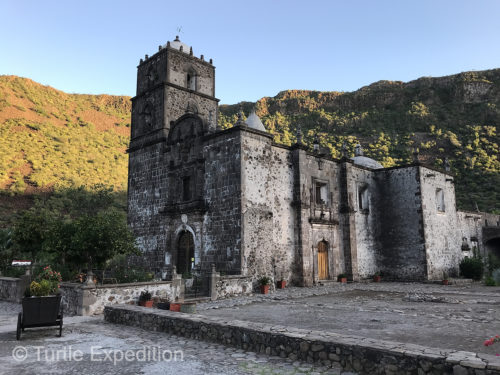
The Mission San Francisco Javier was the second of the Baja California missions, a chain that would eventually reach all the way to San Diego, Los Angeles, San Francisco and end in Sonoma, California.
Many of the Indians succumbed to diseases like smallpox, typhoid, measles brought over by the Spanish. Their numbers were drastically “reduced” and their traditional way of life was disrupted. European fruits, vegetables, sheep, horses and ranching were introduced. The missions have been accused by critics of various abuses and oppression. In the end, the missions had mixed results in their objectives: to convert, educate, and transform the native peoples into Spanish colonial citizens. There is a great poster in a café outside of Ensenada. It reads.”Viva Zapata Cabrones! La Revolution no esta terminada”. (“Viva Zapata Assholes! The Revolution is not finished.”).
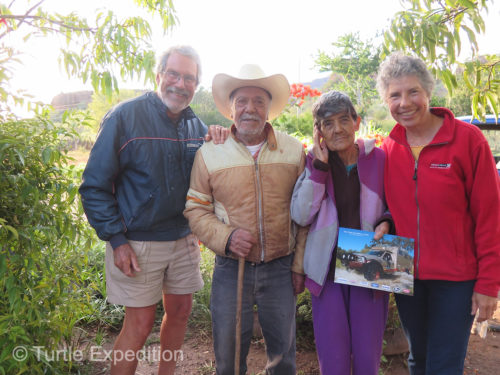
We were happy to see the old horseback guide Bule and his wife on their ranch outside San Javier.
Over the years we have visited many of the old Baja missions. One of our favorites is Mission San Francisco Javier in the rugged mountains west of Loreto. We recalled that the 20-mile dirt road serpentined up under steep cliffs, around hair-pin corners and splashed through knee-deep arroyos. The village was quiet at night except for the town generator which ran till 10:00 pm, their only source of electricity. We stopped along the way to revisit our friends Bule and Angelina, an old couple at their little ranch on the side of the road. Bule, now in his 80s, had been a tour guide leading people into the Baja backcountry where original California families still live a life as they did 100 years ago. These ranches have no roads to them. Pack mules must be used to reach them on what could be an eight day round trip. This has always intrigued us and we were happy to see that Bule still had the contacts who could take us on such an adventure someday.
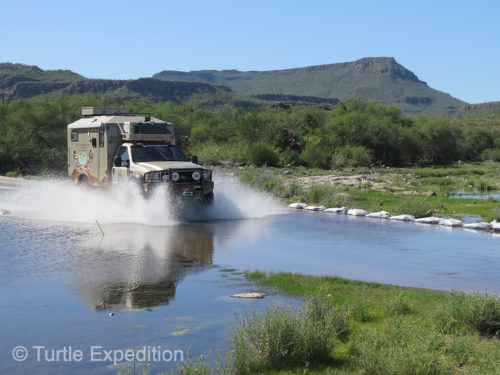
The vados on the new paved road are great free car washes!
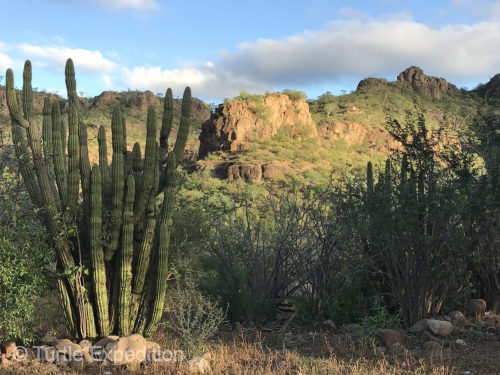
The mountains west of Loreto are full of hiking trails.
The beautiful route up the mountain is now paved all the way to the San Javier but still every bit as spectacular. We were pleased to see that the little community had not changed. Power is no longer from a noisy generator. The beautiful mission, first founded in 1699 and later moved in 1710, was the second to be built in Baja California. It is as impressive as ever. Its hand carved belfry, spires, and altars required many years of construction. Its three gold-leaf altars, surrounded by eight life-size oil paintings, were shipped from mainland Mexico and then carried by mules into this remote location. With a backdrop of steep cliffs soaring hundreds of feet behind it, light filters through the peninsula’s first stained glass windows. It is praised as the finest preserved stone mission on the Baja peninsula. Easy to miss, a short walk behind the church we found the remnants of the first orchard planted in Baja California. Its lone survivor is a stately olive tree estimated at 400 years old. If you want to feel young, wrap your arms around a 400-year-old olive tree.
Baja’s oldest Olive Orchard (400 years!)
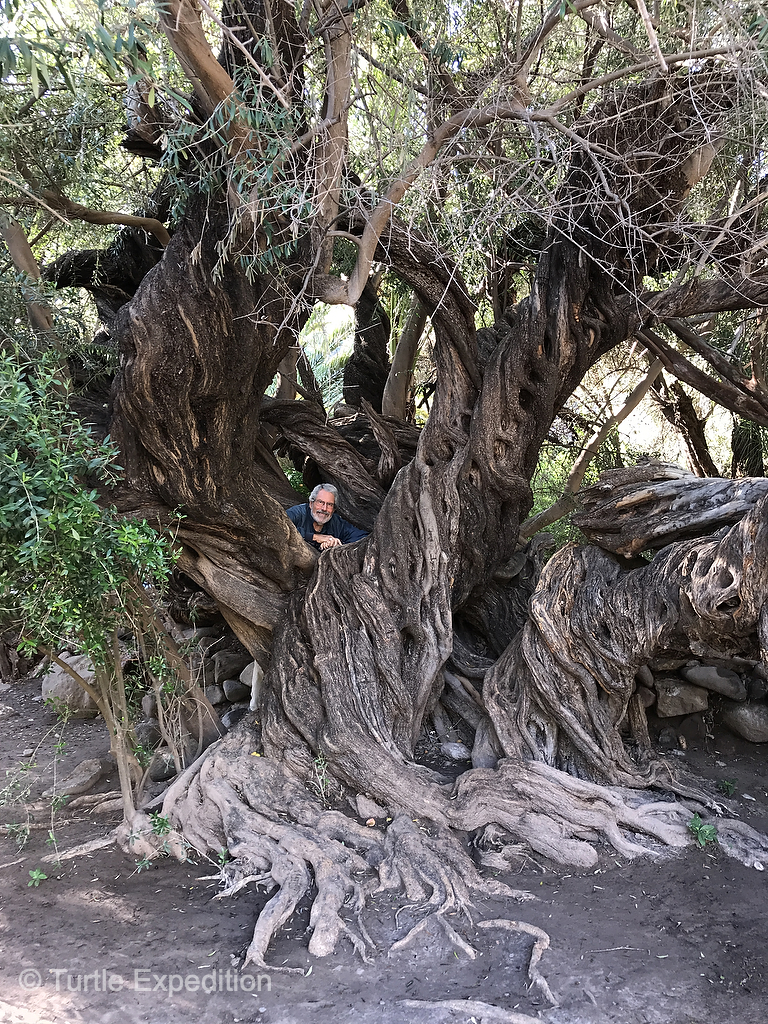
This massive olive tree stands in the first orchard planted in Baja California – 400 years ago!
Still following old memories, we had learned of another ranch in the mountains where they were also still tanning and dying leather in the old way using tannins found in various types of vegetation, particularly the Palo Blanco tree. We had seen some beautiful saddles and clothing, (jackets and chaps), hand stitched, (no electricity!) at Mulegé’s 314
th anniversary fair. The name La Trinidad stuck in our mind. Following somewhat vague instructions, we ended up pushing through squeaking mesquite trees on a two-track.
The famous Trinidad Deer
Yes, there was a ranch called La Trinidad, but no leather tanning. Instead, it turned out to be the location of one of most famous prehistoric rock art pictographs in Baja. The Trinidad Deer, a UNESCO World Heritage site, is attributed to a highly developed pre-Hispanic group of people known as the Guachimis who lived in the area from 100 BC to 1300 AD. The ocher colored Trinidad Deer on a rock wall in the Sierra de Guadalupe cave is renowned by archeologists for its perfect dimensions and symmetry.
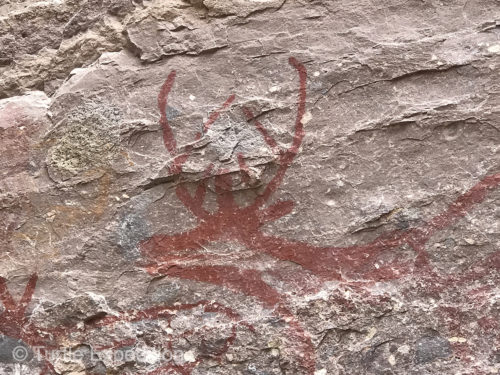
The Trinidad Deer, a UNESCO World Heritage site is attributed to a highly developed pre-Hispanic group of people known as the Guachimis who lived in the area from 100 BC to 1300 AD.
Normally you need a permit obtained in Mulegé and maybe a guide to visit the site. We had just stumble onto it. We were welcomed by the owner of the ranch, Dr. Leonel Orozco Avilés, who happened to be visiting that weekend. It was late in the day, and as an exception, he kindly allowed us to camp for the night. He was a wealth of knowledge about prehistoric rock art of this cave and all of Baja, some of which we had visited on a previous trip.
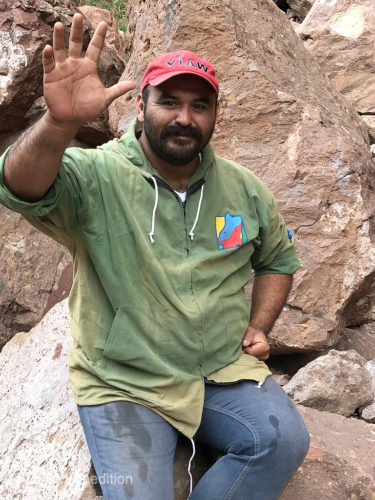
The manager of the Trinidad Ranch lead us to the famous Unesco World Heritage Site to see the famous Trinidad Deer.
The next morning, his ranch manager registered our passports in a big book and we paid the mandatory fee before trekking up to the cave with him and his young son as guides. Going back out the main two-track, we took the precaution of covering our side Seitz windows with
XPEL TRACWRAP, to keep them safe from the hungry mesquite tree thorns. I guess we will visit the ranch where they do the tanning another day.
It was time to head back to our home base now. We had done enough shaking and enough damage to The Turtle V to give us confidence that it was ready for another year-long expedition in South America. We made a quick stop in Mulegé to pick up some supplies, a ½ kilo warm corn tortillas and some fresh local goat cheese. Parking was easy across from the tortilla factory and near the little supermarket. It’s a walk-around town, and yes, there is an Internet café. The Mulegé Mission was the third in the Baja chain.
Coco’s Corner
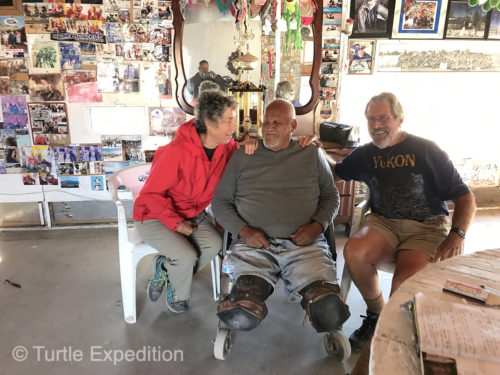
Coco was as jolly as ever and doing just fine.
Moving north, the quiet town of San Ignacio made a great overnight stop by the plaza and we could fill up our water from the faucets by the church in the morning. Of course there was great internet in the new hotel just a block out of town.
Back on Highway 1, we took the turn off on the new section of Hwy. 5, as yet unpaved, to reach our old friend Coco at Coco’s Corner. He was as jolly as ever and doing just fine. Coco’s Corner has been slightly modernized but the old trappings of dozens of girls’ underwear still hung from the rafters and one of our original Turtle Expedition posters retains a proud place on the wall. Looking at the other decorations in his little kitchen, I spotted another girly poster that showed that Coco was still the character loved by thousands of Baja travelers.
Catching Triggerfish at Gonzaga Bay
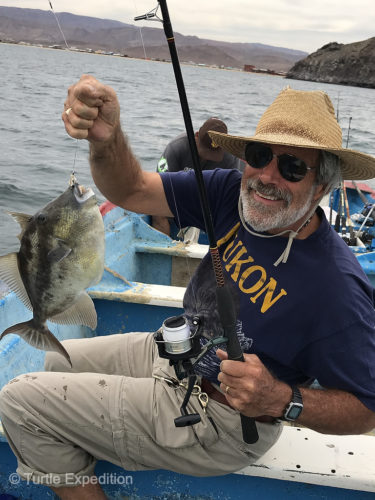
Triggerfish are not only good to eat. They are fun to catch!!
The old sand two-track out of Coco’s Corner is still better than the “improved” gravel. Once the pavement started to appear we stopped to air up the tires and continued on to another one of our favorite waypoints, Gonzaga Bay. Gonzaga is surely one of the nicest beaches in all of Baja California for walking and swimming.
We were getting low on fresh fish by now. Rather than inflate our Sea Eagle inflatable kayak for just a quick fishing trip, we hopped in José’s panga and motored out into the bay by the rocks. He knew exactly what we were looking for: triggerfish! We landed 10 or 12 in less than an hour. Back on shore, José even gave us a lesson on a quick way to clean them resulting in a pile of nice fillets with no bones. (Ask for him at Alfonsina’s Hotel desk.)
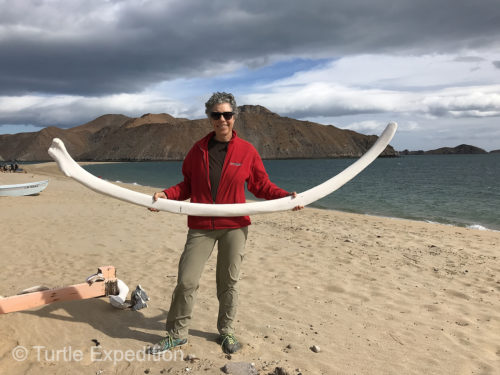
Several of the beach houses at Gonzaga Bay had decorations of whale bones.
A storm was brewing so we headed out early toward San Felipe. The newly paved road was in a state of disaster, thanks to what appeared to be poor engineering. The last hurricane pretty much wiped out every bridge or viaduct. We lost count of the detours after about 18. Turning west on Highway 3 north of San Felipe, the road was in much better shape. Still no shoulders and very narrow but not as many big semi trucks roaring past us. To our surprise, we even had some snow going over one of the passes. The long line at the Tecate border crossing was boring, but much faster than the one at Tijuana. Remnants of Trump’s unfinished famous wall reminded us we were about to reenter California. Showing our passports, we were through in less than a minute.
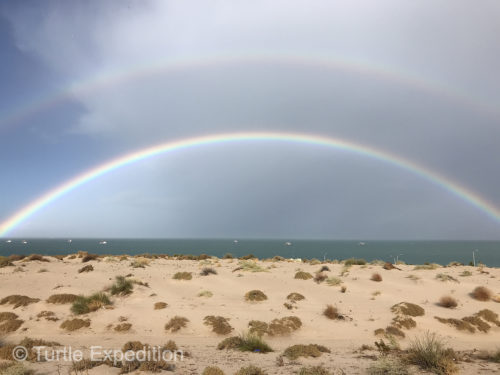
A full double rainbow frames the shrimp boats south of San Felipe as a storm approaches.
Stay tuned as we head for South America where we’ll spend at least a year exploring interior portions of Uruguay, Chile, Argentina, Brazil, Bolivia, and maybe a little of Peru. We hope you will travel with us at www.turtleexpedition.com, which is currently being remodeled to make it easier for those of you who follow us on cell phones, pods and pads. As they say in Mexico, “Hasta Luego”.
-
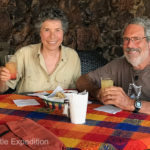
-
Hotel Serenidad outside the quaint town of Mulegé was a must. It was here that Monika and I first met in 1977.
-
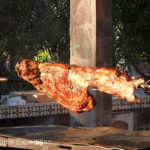
-
We did miss the weekly pig roast.
-
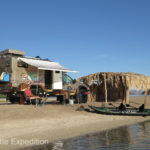
-
Moving down the beautiful coastline of the Sea of Cortez, we stopped at one of our favorite beaches to camp for a week or so.
-
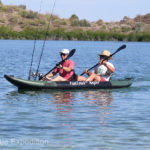
-
We had borrowed a Sea Eagle FastTrack Angler Pro inflatable kayak, (www.seaeagle.com), which would insure an endless supply of fresh fish.
-
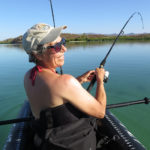
-
Monika had fun fishing out of the Sea Eagle inflatable kayak.
-
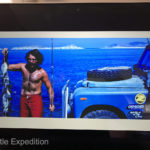
-
The memory of this photo taken in 1977 on the Sea of Cortez was one we wanted to revisit.
-
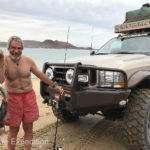
-
We could have fished off the rocks but having a boat made the catch easier.
-
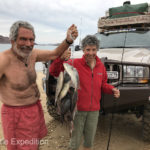
-
We were happy with our day’s catch of tasty triggerfish.
-
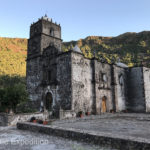
-
The Mission San Francisco Javier was the second of the Baja California missions, a chain that would eventually reach all the way to San Diego, Los Angeles, San Francisco and end in Sonoma, California.
-
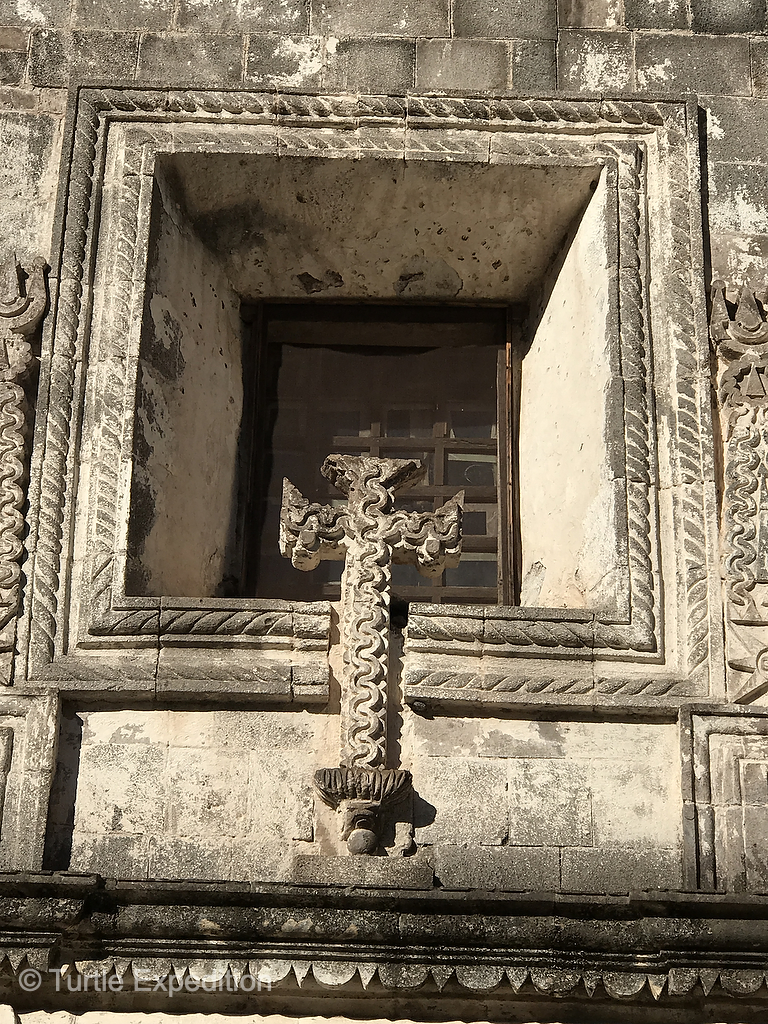
-
Its hand-carved belfry, spires, and altars required many years of construction.
-
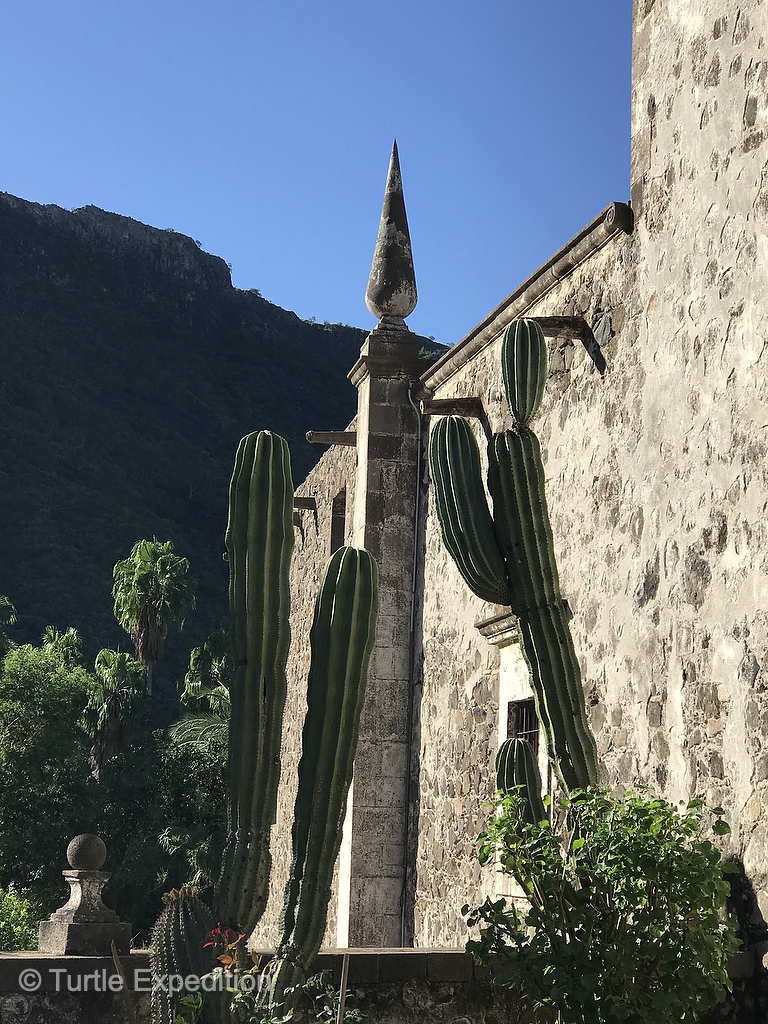
-
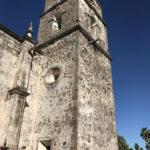
-
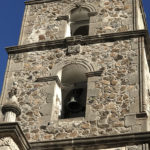
-
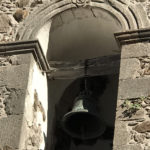
-
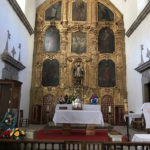
-
ts three gold-leaf altars, surrounded by eight life-size oil paintings, were shipped from mainland Mexico and then carried by mules into this remote location.
-
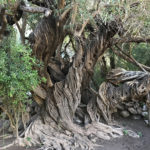
-
Behind the mission we found the remnants of the first orchard planted in Baja California.
-
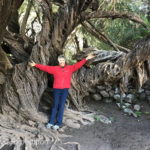
-
If you want to feel young, wrap your arms around a 400-year-old olive tree.
-
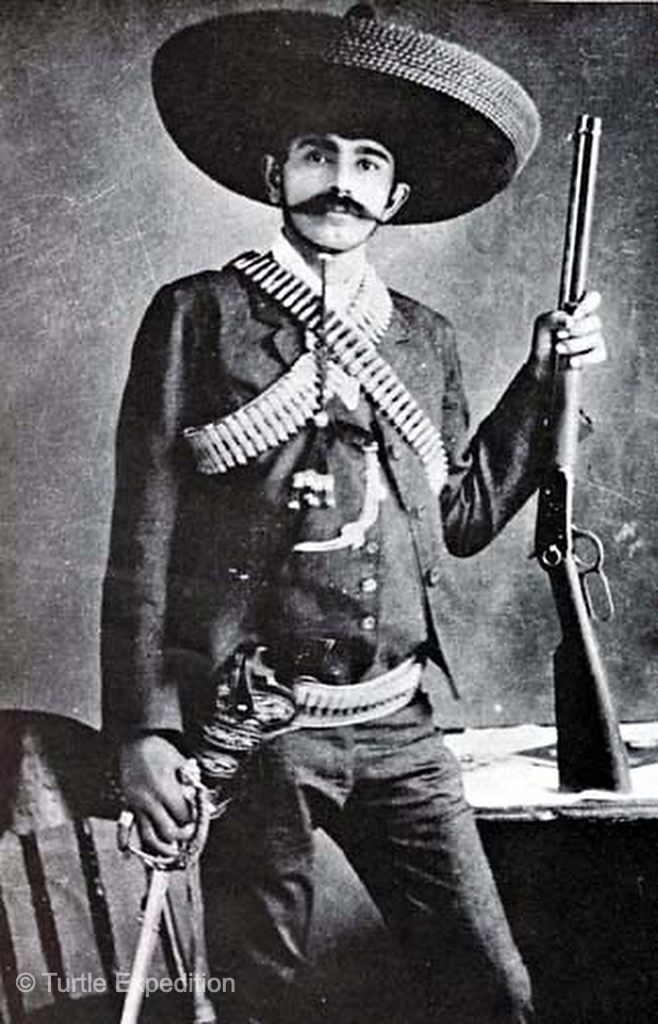
-
There has always been critics of what the Spanish Crown did to what is now Mexico. A poster in a café says it well: .”Viva Zapata Cabrones! La Revolution no esta Terminada”. (“Viva Zapata Assholes! The Revolution is not finished.”).
-
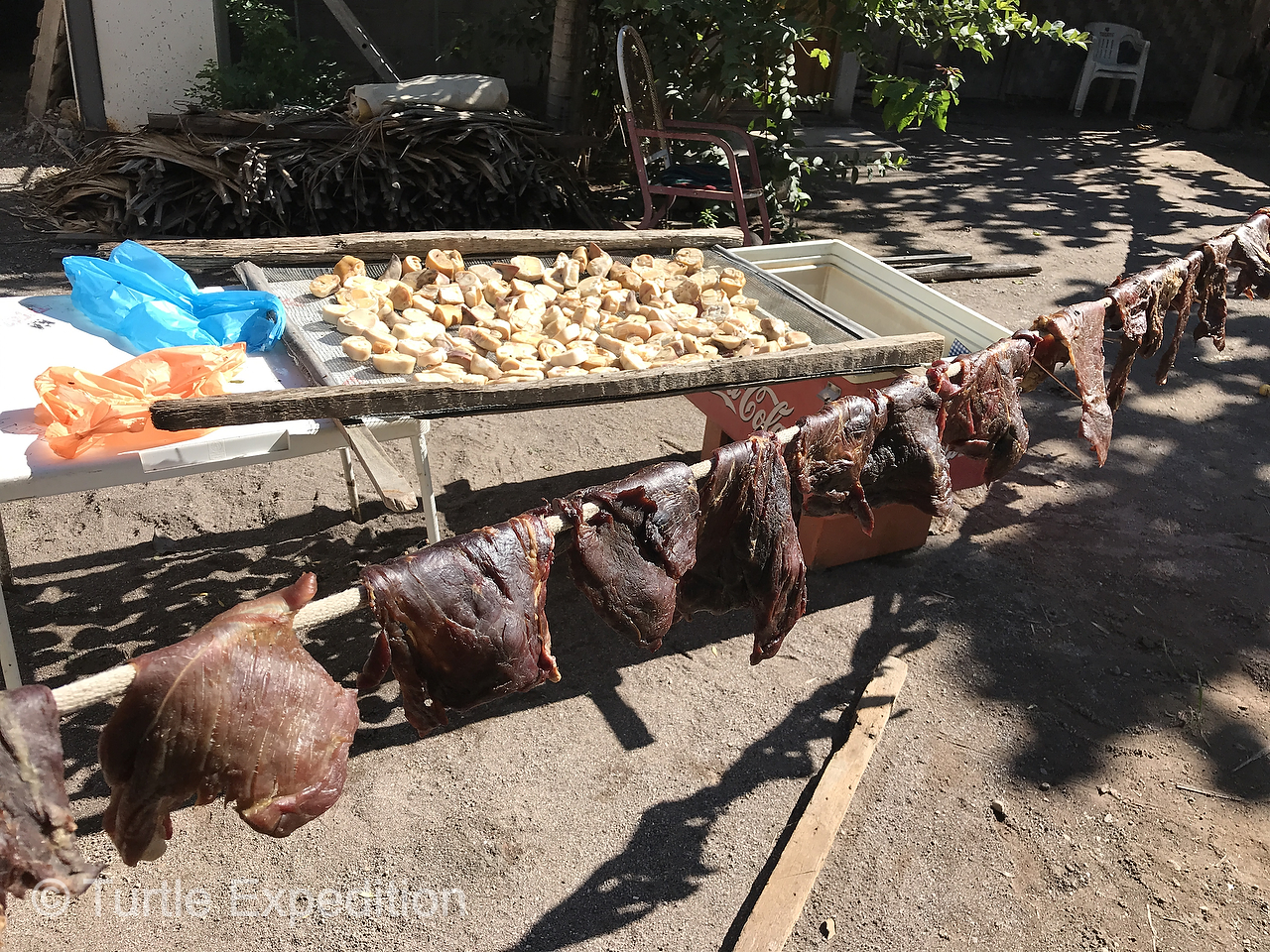
-
Without refrigeration meat is preserved by drying.
-
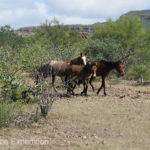
-
Horses, burros and cattle are an ever present danger on Baja roads.
-
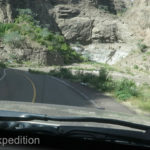
-
Hair-pin corners add to the beauty of this amazing route to the Mission San Francisco Javier.
-
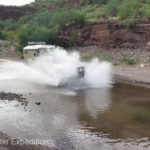
-
The vados on the new paved road are great free car washes!
-
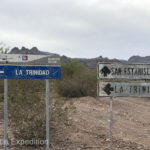
-
There were actually signs to La Trinidad, but we had been looking for a different ranch near there.
-
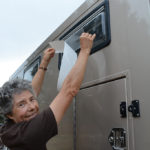
-
We took the precaution of covering our side Seitz windows with XPEL TRACWRAP, (www.XPELcom,) to keep them safe from the hungry mesquite tree thorns.
-
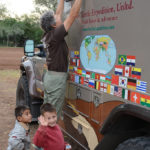
-
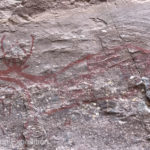
-
The Trinidad Deer, part of a UNESCO World Heritage site, is attributed to a group of people who lived in the area from 100 BC to 1300 AD.
-
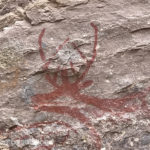
-
A close-up of the Trinidad Deer, a famous pictograph near Mulegé.
-
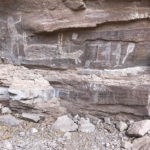
-
There were several other paintings on the rock walls in the Sierra de Guadalupe cave.
-
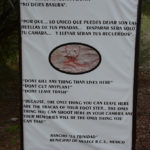
-
This sign at Rancho La Trinidad make the rules clear.
-
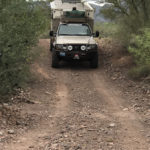
-
Sharp spines of the mesquite trees left their marks on the sides of The Turtle V.
-
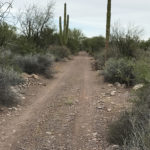
-
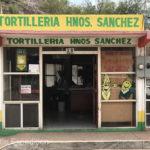
-
The Tortilleria Hnos. Sanchez is a great source of fresh warm corn tortillas, homemade cheese and information. The young owner says he speaks “Spanglish”.
-
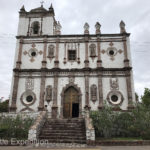
-
The beautiful San Ignacio Mission provided a quiet place to park around the old plaza. We could refill our water in front of the church.
-
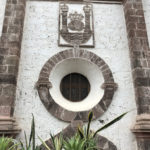
-
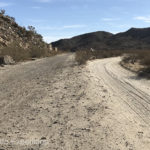
-
The old sand two-track leading to Coco’s Corner is still better than the “improved” gravel.
-
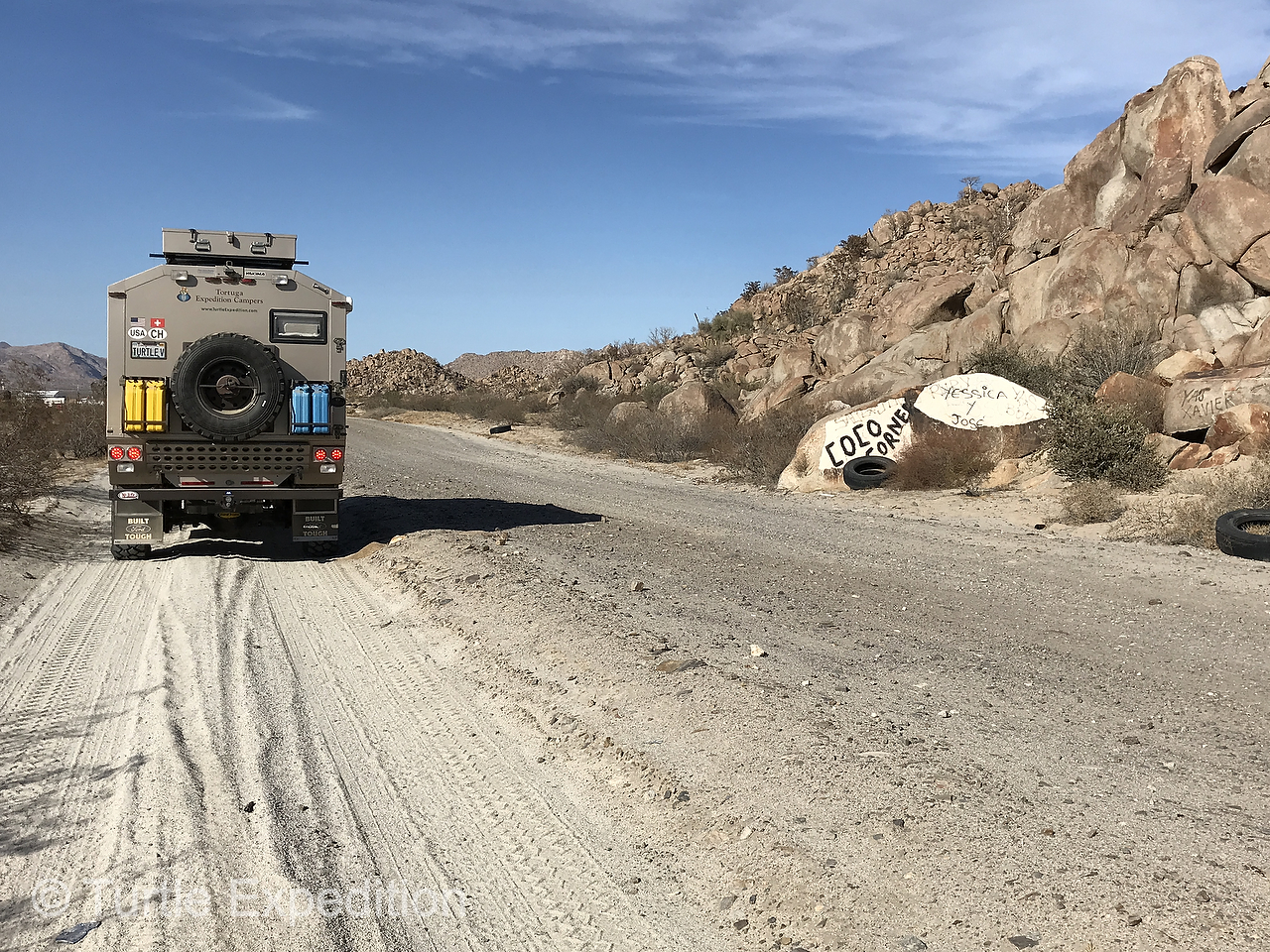
-
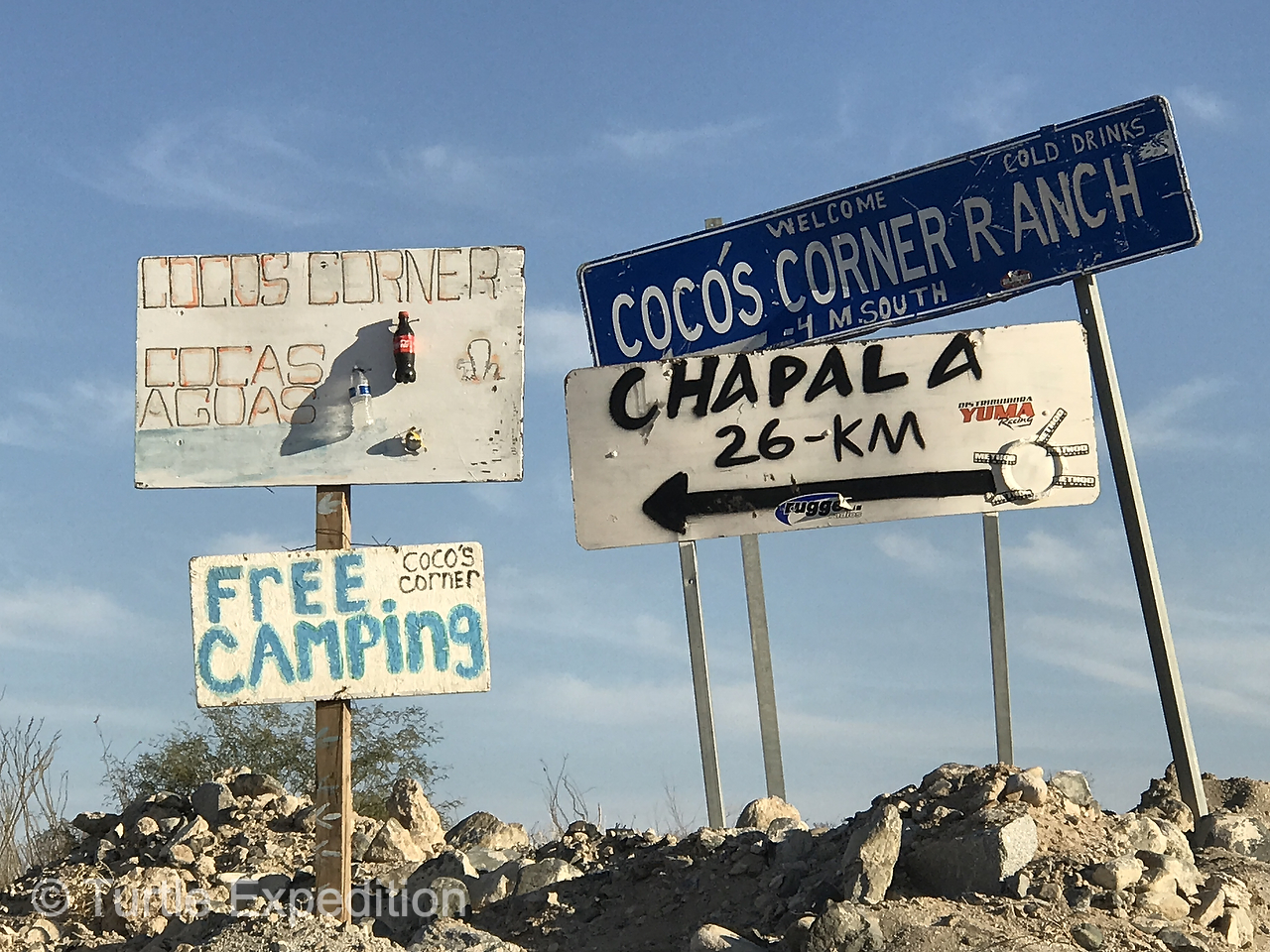
-
There are plenty of signs leading to Coco’s Corner.
-
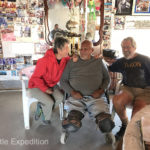
-
Coco was as jolly as ever and doing just fine.
-
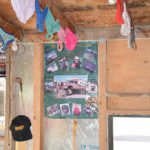
-
Dozens of girls’ underwear still hang from the rafters and one of our original Turtle Expedition posters retains a proud place on the wall.
-
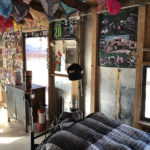
-
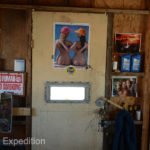
-
I spotted another poster that showed that Coco was still the character loved by thousands of Baja travelers.
-
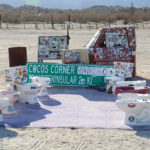
-
Always plenty of bathrooms at Coco’s Corner!
-
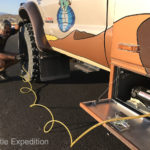
-
Once the pavement started to appear we stopped to air up the tires.
-
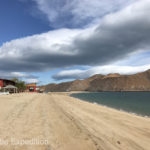
-
Gonzaga Bay is surely one of the nicest beaches in all of Baja California for walking and swimming.
-
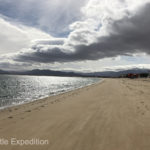
-
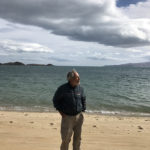
-
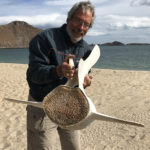
-
Locals have found interesting remains of grey whales that made it this far north in the Sea of Cortez.
-
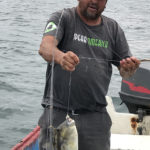
-
José was happy to help us remove the hooks from our catch.
-
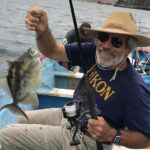
-
Triggerfish are not only good to eat. They are fun to catch!!
-
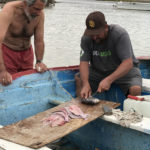
-
José gave us a lesson on a quick way to clean triggerfish resulting in a pile of nice fillets with no bones.
-
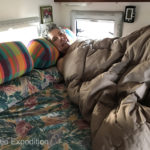
-
The luxury of overlanding in a self-contained camper—you get to sleep in while coffee is brewing.
-
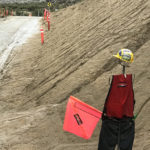
-
The Mexican Highway Department had practical ways to save labor.
-
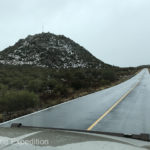
-
Hwy. 3 still had no shoulders and was very narrow but not as many big semi-trucks roaring past us.
-
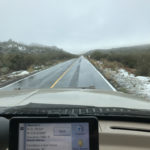
-
We even had some snow going over this pass toward Ensenada.
-
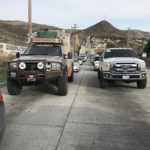
-
The long line at the Tecate border crossing was boring, but much faster than the one at Tijuana.
-
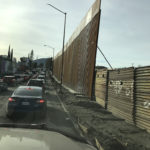
-
Remnants of Trump’s unfinished famous wall reminded us we were about to reenter California.
Filed under:
Mexico by Monika Wescott
